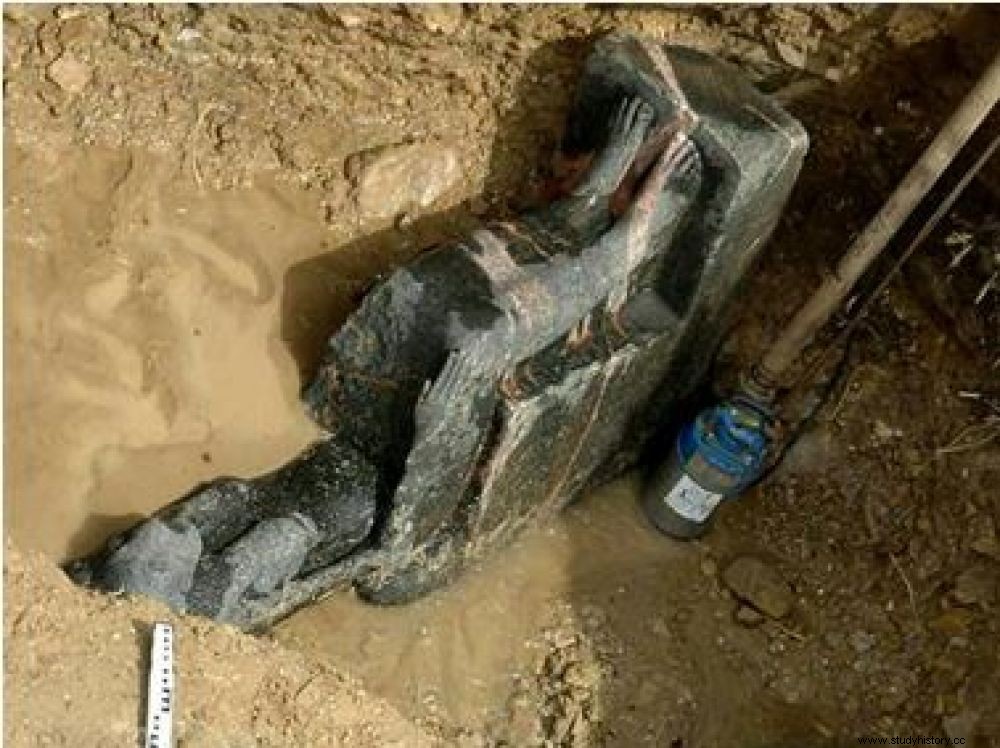Statues representing Sekhmet, the lioness-headed deity, have been unearthed near the Colossi of Memnon, in Luxor, Egypt.

Black granite statue representing the goddess Sekhmet, discovered in Luxor (Upper Egypt).
A collection of 27 fragmented statues of the Egyptian goddess with the body of a woman and the head of a lioness Sekhmet has been discovered near the Colossi of Memnon in Luxor (center), the Ministry of Antiquities announced on Sunday December 3, 2017. This discovery took place during an excavation carried out by an Egyptian-European archaeological mission, as part of the conservation project of the "temple of millions of years" of Pharaoh Amenhotep III (Amenhotep, in Greek). The largest funerary temple in ancient Egypt erected to the glory of this ruler of the New Kingdom (1540-1070 BC), father of Akhenaten and grandfather of Tutankhamun. As every year at this same season, the excavations began on November 7 and lasted until the end of the month, Hourig Sourouzian, the German archaeologist who heads the mission, told AFP.
Some of these statues representing the goddess Sekhmet are in good condition
According to Mostafa Waziri, secretary general of the Supreme Council of Antiquities, some statues depict the goddess Sekhmet "seated on the throne, holding the symbol of life ankh in his left hand, or standing and holding the papyrus scepter in front of his chest "The ministry statement said. "The state of preservation of the statues is variable "Said Hourig Sourouzian. Some, found buried in thick layers of alluvium, are in good condition. These statues are carved in black granite and sometimes measure up to two meters, according to Mostafa Waziri.
Warrior goddess with the head of a lioness personifying the destructive force of the sun, instrument of the vengeance of the god Ra, the solar disc creator of the universe, Sekhmet was feared by her enemies for her devastating power. To date, 287 statues of Sekhmet have been exhumed since the beginning of the excavations of this exceptional royal temple (amenophium ) undertaken in 1998. They originally decorated the vast peristyle room giving access to the holy of holies, the naos where was the statue of the god-pharaoh.
The sovereign of the XVIII th dynasty, had chosen the western bank of the Nile, at the foot of the Theban mountain, so that his name would be exalted during his lifetime and his eternal life ensured. In recent years, several colossi bearing the likeness of the pharaoh have also been unearthed along with the statues of Sekhmet. Some reaching up to 18m high. Luxor, a city of half a million people on the banks of the Nile in Upper Egypt, is home to the archaeological remains of the ancient Egyptian capital of Thebes.
Bernadette Arnaud with AFP
